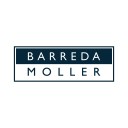Which is the consumer whose criterion must be taken into consideration when establishing if the trademarks are confusingly similar?

Published byBarreda Moller

Since the Court of Justice of the Andean Community issued the prejudicial interpretation Nº 286-IP-2016, on November 17, 2917, two novel criteria were introduced in the Trademark Law field alongside the universally accepted average consumer criterion, the selective consumer and the specialized consumer.
This subject is not superficial but of great importance since as legislation, doctrine and case law universally acknowledge, the judger must place itself in the consumer’s shoes and, according to its criterion, decide if the consumer would confuse or not two trademarks and, if the answer is positive, the consequence is that the registration or the use of the junior mark will be prevented or prohibited according to the action concerned: application for registration or trademark infringement action.
The Court of Justice of the Andean Community, in the aforementioned prejudicial interpretation, stated the following in relation to the consumer which criterion must be taken into consideration at the time of comparing trademarks:
“
c) The comparative analysis must emphasize the similarities and not the differences since in the similarities can be perceived the risk of confusion or association.
d) It is important when performing the comparison to put oneself in the consumer’s place and its level of perception, according to the type of products or services concerned, under the following criteria:
(i) Average consumer criterion: if we are before products and/or services of massive consumption, the criterion of the average consumer could be the support of the confusability analysis. According to the maxims of the experience, the average consumer is expected to be usually informed and reasonably attentive, which perception level is variable in relation to the category of goods or products, which must be analyzed and pondered by the competent national authority.The degree of attention of the average consumer is an important parameter for the confusability analysis of marks that differentiate products or services of massive consumption, being understood that it can vary or be adjusted according to the type of product concerned, since, for example, the same level of attention is not paid when buying cosmetics than when purchasing snacks for parties.
(ii) Selective consumer criterion: It is based on a more informed and attentive consumer than the average consumer, since it chooses the goods and services under certain specific parameters of quality, positioning or status. It is a consumer that has been clearly apprised of the characteristics and qualities of the products or services it wishes to acquire. This consumer knows aesthetic, quality and working details that the average consumer would not know. For example, the consumer of gourmet restaurant services is conscious of the service said restaurants provide, since the consumer knows information of their customer service, cost of the dishes, advertising management, promotions, etc.
(iii) Specialized consumer criterion: It is based on an absolutely informed and attentive consumer about the technical, functional or practical characteristics of the products or services it acquires, having as support its high level of technical or professional instruction. Said consumer makes a more detailed evaluation of the good or service it desires to acquire, a fact which must be taken into consideration by the competent national authority when performing the respective confusability analysis.
1.5 In the analysis of the concrete case, taking into consideration the above rules and criteria, it is important to determine the similarities of the marks in conflict from the different types of similarity that can occur, in order to establish if the consumer could incur in confusion and/or association risk.”
The Court of Justice does not explain why it has decided to incorporate in the comparative analysis of the trademarks, next to the average consumer criterion, the “selective consumer” and “specialized consumer” criteria, it does not explain either the genesis of said concepts or whether they have been taken from doctrine or are creation of the cited Court itself.
We believe that the Court’s treatment of this subject, by creating two new types of consumer next to the traditional criterion of average consumer, is not pertinent and confuses more than it clarifies.
We believe that the subject should have been tackled as follows:
a. All trademark comparative analysis must be made according to the average consumer criterion of the market concerned.
b. In some markets, the average consumer will be little attentive, and in other markets said consumer will be more informed, thereby existing markets where the average consumer will be more selective and even specialized. Consequently, trademarks must be compared according to the particular criterion of the average consumer (little attentive, informed, selective, specialized, etc.) of the market for which the products bearing the trademarks at issue are destined.
We believe that the creation of the concepts of selective or specialized consumer arises from intending to adopt in the trademark law, consumer concepts coming from other legal branches where these concepts play other roles:
a. In the field of consumer’s protection. The consumer is defined not as “average” but as “reasonable” in the search of protecting under the defensive rules of this discipline only the reasonable consumer, understanding as such the consumer which is duly informed of the provisions of the contract whereby said consumer purchased a product and not the consumer who does not read these provisions, that is an average consumer, which negligence cannot be rewarded with the defensive rules of this discipline.
b. In the field of trademarks. The consumer is defined as an average consumer, from this perspective, to judge whether two marks are confusing or not; that is, if they may or may not coexist in the market. The consequence of creating, next to the average consumer criterion, the concepts of selective or specialized consumer, as independent of the first, is that the coexistence of trademarks, which would not have been permitted if these concepts had not been created, will be allowed. Let us explain: using the example mentioned by the Court about the selective consumer of gourmet restaurants, given that this is a highly informed consumer, the coexistence in this market of very similar marks must be allowed, coexistence which would not be allowed in other markets. We do not believe that this option is shared by the owners of gourmet restaurants, since they, as any business owners, try to differentiate their offers from those of their competitors through distinctive and different trademarks, which are not similar nor confusing with third party’s trademarks that take part in the market.
We believe that, in the field of trademark law, the traditional average consumer concept must be maintained and new consumer concepts should not be included for the mere fact of innovating, without taking into consideration the unhappy consequences that said innovations may have.

